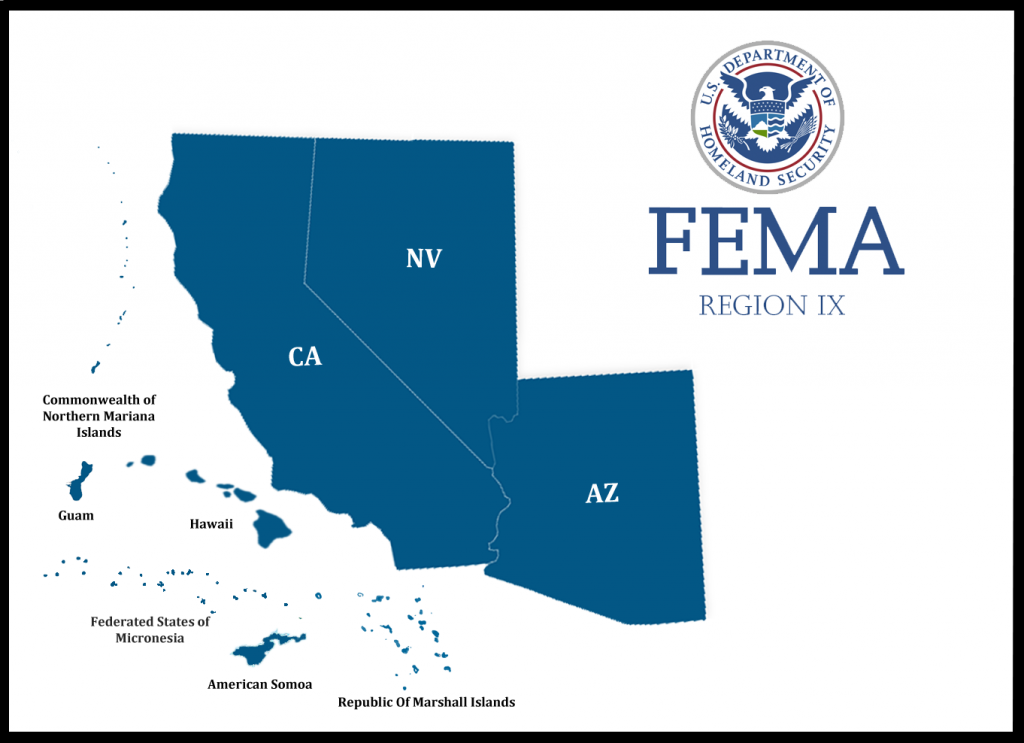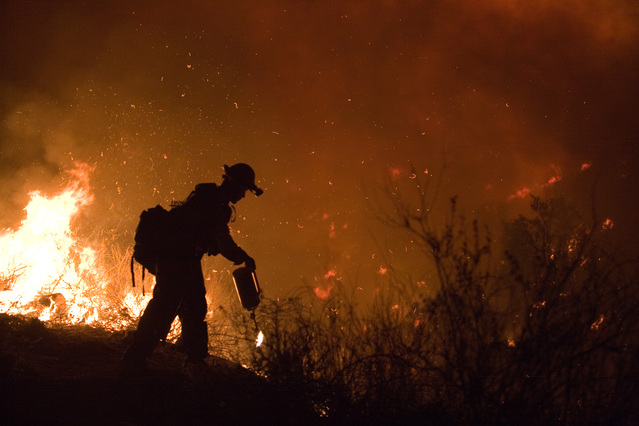This section of the site contains information on FEMA Region 9 agency leadership, policies, area of operations, relevant hazards and other agency information.
FEMA Region 9
 The Federal Emergency Management Agency supports citizens and first responders to ensure that as a Nation we work together to build, sustain, and improve our capability to prepare for, protect against, respond to, recover from, and mitigate all hazards. FEMA Region 9, headquartered in Oakland, California, is one of ten Regional Offices. The people of the Federal Emergency Management Agency serve the United States by providing help to people impacted by disasters, working with state, local, and tribal governments.
The Federal Emergency Management Agency supports citizens and first responders to ensure that as a Nation we work together to build, sustain, and improve our capability to prepare for, protect against, respond to, recover from, and mitigate all hazards. FEMA Region 9, headquartered in Oakland, California, is one of ten Regional Offices. The people of the Federal Emergency Management Agency serve the United States by providing help to people impacted by disasters, working with state, local, and tribal governments.
On call 24/7, FEMA's public servants are experts in the various fields of emergency management. FEMA Region 9 supports the development of a regional, all-hazards, risk-based emergency management system of preparedness, prevention, protection, recovery, and mitigation through close working relationships that draw on the talents and assets of federal agencies, state, tribal nations, localities, business and industry, and state and local volunteer organizations and faith-based groups.
FEMA Region 9: Area of Operations

FEMA Region 9’s area of responsibility includes: Arizona, California, Hawaii, Nevada, Guam, American Samoa, Commonwealth of Northern Mariana Islands, Republic of Marshall Islands, Federated States of Micronesia and more than 150 sovereign tribal entities.
Region 9 serves a culturally diverse population in excess of 47 million people and covers 399,000 square miles with a breadth of more than 8,000 miles. The Region's most common challenges are hurricanes, typhoons and other storms that can cause flooding, flash-flooding, and landslides throughout the region. The Region also experiences earthquakes and wildfires.
FEMA Region 9: Hazards
Region 9 faces several unique challenges when identifying our priorities, objectives and activities. The Region spans 8 time zones, contains over 150 sovereign Native American entities, and contains the world’s seventh largest economy in California. Amongst the major threats facing the region is the real-time potential for truly massive, no-notice earthquakes; wildfires, floods and even Tsunami's. Our catastrophic plan for a major earthquake in Southern California suggests damage that could include: 1,800 fatalities; 9,000,000 people being displaced and $200 billion in losses. Such a catastrophic earthquake scenario truly represents the Maximum of Maximums in disaster scenarios and is considered one of the Nation’s leading disaster risks.
In addition, the Region faces comple x logistical challenges in preparing for and executing coordinated Recovery operations in our areas of responsibility in the Pacific Basin, particularly due to the “tyranny of distance” facing disaster responders. Due to their geographic isolation and concentration of population, it is well worth highlighting the hazards that the Pacific jurisdictions face as these factors collectively create a “perfect storm” of vulnerability.
x logistical challenges in preparing for and executing coordinated Recovery operations in our areas of responsibility in the Pacific Basin, particularly due to the “tyranny of distance” facing disaster responders. Due to their geographic isolation and concentration of population, it is well worth highlighting the hazards that the Pacific jurisdictions face as these factors collectively create a “perfect storm” of vulnerability.
Unlike the Region’s western states, which are generally able to come to each other’s aid in a relatively rapid manner through the Emergency Management Assistance Compact (EMAC) and other cooperative agreements, the Pacific jurisdictions will have to largely rely on their own resources for a longer time following any disaster than would a similar mainland area. Flight times for resources are measured in hours or days instead of minutes as with continental United States area; and surface movement is measured in days or weeks instead of hours. Hawaii is our main logistical hub in supporting the Pacific territories,making disasters there a significant challenge to Region 9’s response capability throughout the Pacific.
What are you looking for?
- America's PrepareAthon!
- Internships for Students/Graduates
- FEMA Region 9 Contacts
- FEMA employment opportunities





